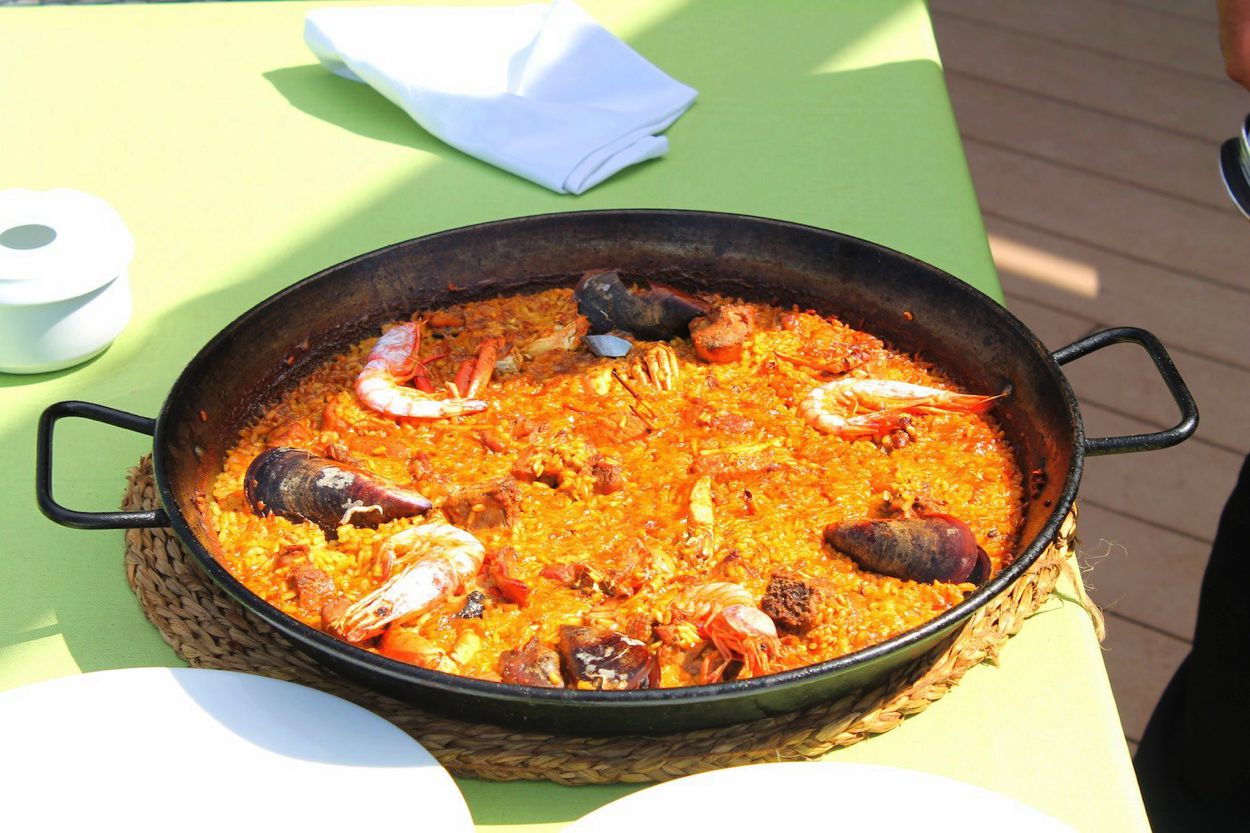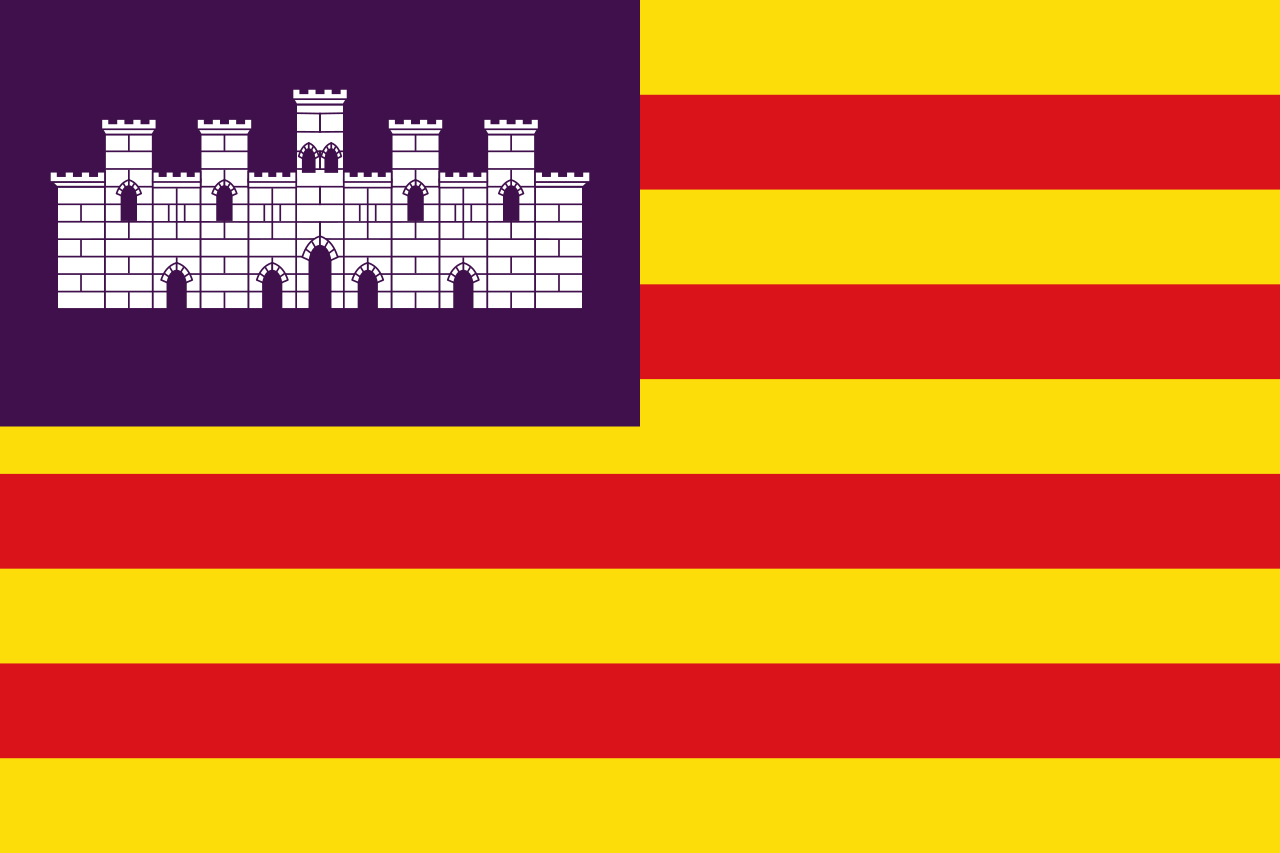The archipelago forms an autonomous community and a province of Spain, with Palma de Mallorca as the capital. The 2007 Statute of Autonomy declares the Balearic Islands as one nationality of Spain. The co-official languages in the Balearic Islands are Catalan and Spanish.
The main islands of the autonomous community are Majorca (Mallorca), Menorca/Minorca (Menorca), Ibiza (Eivissa/Ibiza) and Formentera, all popular tourist destinations. Amongst the minor islands is Cabrera, the location of the Cabrera Archipelago Maritime-Terrestrial National Park.
The islands can be further grouped, with Majorca, Menorca, and Cabrera as the Gymnesian Islands (Illes Gimnèsies), and Ibiza and Formentera as the Pityusic Islands (Illes Pitiüses officially in Catalan), also referred to as the Pityuses (or sometimes informally in English as the Pine Islands). There are many minor islands or islets close to the biggest islands, such as Es Conills, Es Vedrà, Sa Conillera, Dragonera, S'Espalmador, S'Espardell, Ses Bledes, Santa Eulària, Plana, Foradada, Tagomago, Na Redona, Colom, L'Aire, etc.
The Balearic Front is a sea density regime north of the Balearic Islands on the shelf slope of the Balearic Islands, which is responsible for some of the surface flow characteristics of the Balearic Sea.
Area: 4 992 km²
Capital: Palma de Mallorca
Population: 1,107 million (2016)
Languages
Both Catalan and Spanish are official languages in the islands. Catalan is designated as a "llengua pròpia", literally "own language" in its statute of autonomy. The Balearic dialect features several differences from standard Catalan. Practically all residents of the Balearic Islands speak Spanish fluently. In 2003 74.6{8ded7344ef1f8d0e8a7027747480725e30a18cbef0b0b50ea43e9483a2aee5bb} of the Islands' residents also knew how to speak Catalan and 93.1{8ded7344ef1f8d0e8a7027747480725e30a18cbef0b0b50ea43e9483a2aee5bb} could understand it. Other languages, such as English, German, French and Italian, are often spoken by locals, especially those who work in the tourism industry.
Currency
The Balearic Islands’ currency is the Euro, as used in the rest of Spain. While on the islands you can change money at a bank or currency exchange, withdraw money at an ATM or pay with your credit card. But we recommend you order your Euros in advance to get the best rate.
Climate
In the Balearic Islands, the climate is Mediterranean, with mild winters and hot and sunny summers, a bit sultry but tempered by sea breezes. In plains and coasts, the average temperature of January and February is between 9 °C and 11 °C (48 °F and 52 °F), while that of July and August is about 24/24.5 °C (75/76 °F). Rainfall is generally not abundant, since it amounts to 400/450 mm (15.5/17.5 in) per year on the coast, and follows the Mediterranean pattern, so it is more common in autumn and winter, and decreases gradually during spring, reaching its low in summer, when it almost never rains.

Religions
Freedom of religion is guaranteed by the Spanish Constitution, although the majority of the population is Catholic. Other religions also practised in Spain include Islam, Judaism, Protestantism, and Hinduism, all of which have places where to conduct their rituals.
Health
No vaccine is required but it is recommended to have the regular vaccines up-to-date.
Getting to the Balearic Islands
By Plane:
American Airlines offers direct flights from both Miami (MIA) and New York (JFK) to Barcelona. A number of other major carriers including United, Delta, and British Airlines offer direct flights from JFK and several connecting options nationwide. From Barcelona, local carriers offer short daily flights to Ibiza, Menorca, and Palma de Majorca Airport, the third largest airport in Spain. Formentera is only accessible by boat from Ibiza.
By Boat:
Major ferry carriers Balearia and Trasmediterránea operate daily overnight ferries from Barcelona, Valencia and Dénia to Majorca, Menorca and Ibiza. Formentera can be reached from Ibiza via Balearia and Transmapi.
Getting Around
Island-hopping is a fairly simple affair with ferries running daily between all the main islands. If you plan on visiting all four, start with Menorca, followed by Majorca, then Ibiza, and finally Formentera. This sequence offers direct travel and features the shortest routes between the islands. Balearia ferry prices start at approximately 20€ for basic seating and up to several hundred for a cabin. In general, rental cars are not permitted on ferries between islands. For seasonal jaunts between Ibiza and Formentera ports, Aquabus offers a no-frills ride starting at 9.50€ each way.
Culture
Mallorca is home to a well-maintained old city, where palm fronds provide shade to narrow boulevards, and landmarks abound. The most famous is the Catedral de Mallorca, a large Gothic building near the water that also includes a small on-site museum. The Banys Àrabs, a 10th century Arab bath on Carrer de Serra, is worth the nominal fee, while a walk through the bull ring on the Avenue de Gaspar Bennazar can be interesting even when there aren't events scheduled. The Castel de Bellver is a 14th century castle on a hill overlooking the ocean and, along with providing great views, is worth seeing for its unique, circular layout. There are also a number of attractive squares in the city, most notable of which are the Plaza Major and Plaza Mercat. For lovers of contemporary art, including masters like Picasso and Dali, the Museo de Arte Español Contemporáneo in Sant Miquel is also an option.
Outside of Palma, there are other worthwhile cultural landmarks worth inclusion in your itinerary. La Cartuja (the Royal Charterhouse) is an old monastery in the Serra de Tramuntana mountain range known for the temporary residency of Chopin and George Sand; check it out in the village of Valldemossa. There are few other notable landmarks on the island in the usual cultural sense, although there are a few picturesque coastal towns (Cala Figuera, for one) amidst the resort development that has occurred increasingly over the last half of a century.
Menorca, the quieter of the two islands, has a few important, ancient sites from the Talayot era (over 3,000 years old) for travelers to discover. The ruins of Capocorb Vell on Mallorca are the most extensive, but the ruins of Torre d'en Galmés near Son Bou and Trepucó near the city of Maó are both legitimate ruins in Menorca. There are also numerous navetas on the island, ancient burial structures also over 3,000 years old; the largest and most well-aged is the Naveta d'Es Tudons near the town of Ciutadella. For more recent culture, the capital, Mao, on the island's eastern point, has enough Georgian architecture from its British occupation, pedestrian streets, and pleasant squares (the Plaza de la Conquesta, for one) in its historic center to deserve a good day of looking around. It's harbor is also notable for being the second deepest on Earth, as well as a great place to kick back and relax. Also worth mentioning is the town of Ciutadella on the western end. It is also worth seeing for its many Italian-inspired, 17th century buildings and its lovely port.
Cuisine

The cuisine of the islands can be grouped as part of wider Catalan, Spanish or Mediterranean cuisines. It features much pastry, cheese, wine, pork and seafood. Sobrassada is a local pork sausage. Lobster stew from Menorca, is one of their most well-sought after dishes, attracting even King Juan Carlos I to the islands.[28] Mayonnaise is said to originate from the Menorcan city of Maó, which also produces its own cheese. Local pastries include Ensaimada, Flaó and Coca.














